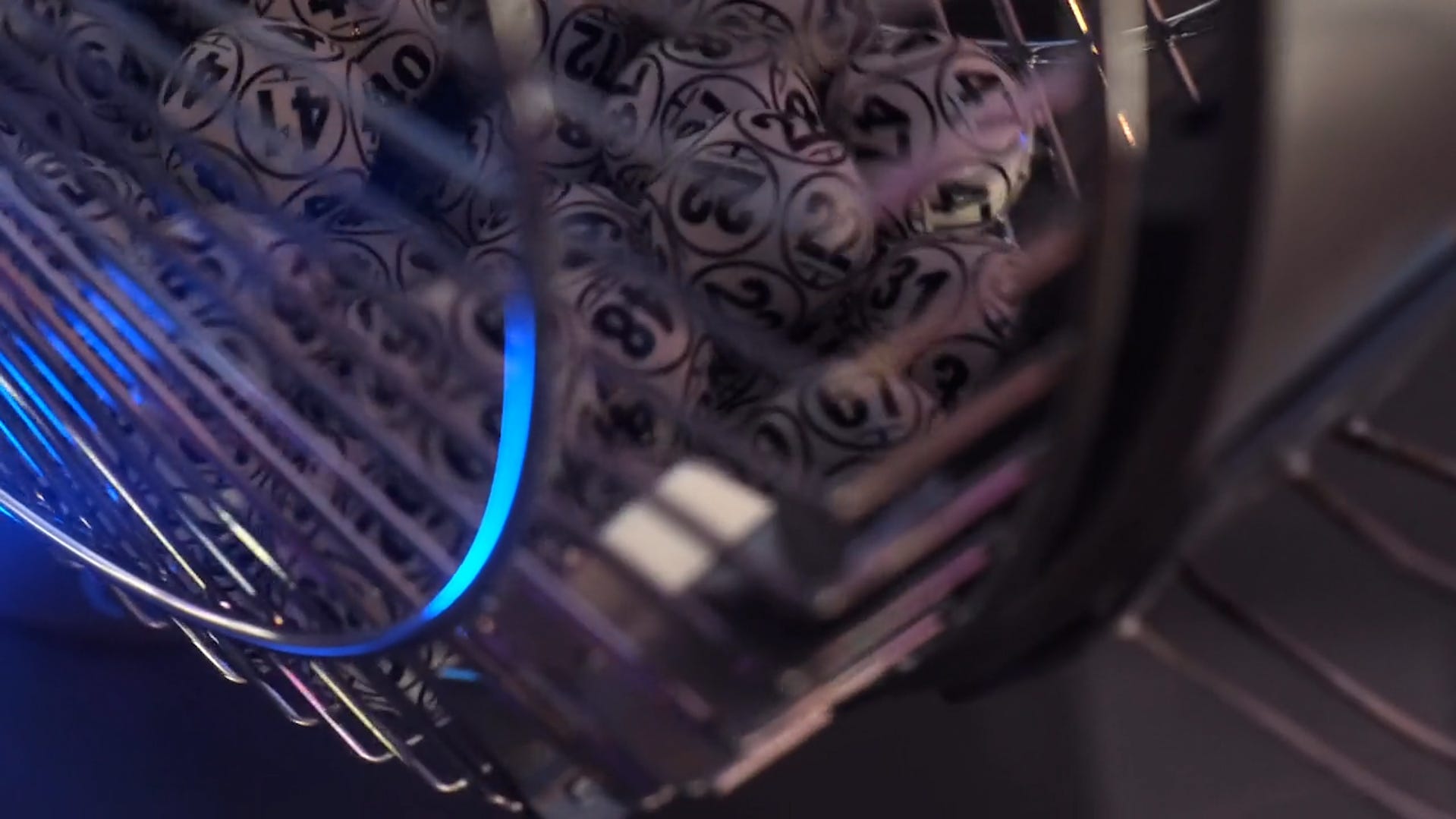New York
A Montauk Fisherman Faces Prison Over 200,000 Pounds of Fluke

It was just before dawn when Chris Winkler, a fisherman in Montauk, N.Y., set off on his trawler, the New Age.
A longhaired surfer who looks far younger than his 63 years, Mr. Winkler was in flip-flops and shorts, trailed by Murphy, a good-natured Irish water spaniel who is usually his only company.
But on that July day, he had others aboard: members of his legal team and a reporter. He was gearing up for a federal trial that began this week in Central Islip, N.Y., before Judge Joan M. Azrack on charges of taking more fish from the sea than the law allows.
Prosecutors say that in past years Mr. Winkler exceeded the limit on fluke, a spotted flat fish also known as summer flounder, by at least 200,000 pounds, and caught more black sea bass than was allowed.
He is accused of making hundreds of thousands of dollars in illicit deals with of one of Montauk’s most venerable seafood institutions, Gosman’s. The two men originally charged with him, Bryan and Asa Gosman, cut deals with the government and are expected to testify against him.
Gosman’s Dock boasts sprawling restaurants and retail stores in addition to its wholesale business. For decades, it has been one of Long Island’s largest suppliers of fresh fish, and has been a mainstay in Montauk, even as the fishing-village soul of the town has been overshadowed by big-spending tourists in something of a Hamptonification. That could change soon: Gosman’s Dock is up for sale, priced at $45 million.
Mr. Winkler’s boat is still docked just behind the Gosman’s complex. He runs a shoestring operation, working by himself on his 45-foot trawler as his legal bills mount. He has been out on a $100,000 bail bond for the past two years. His lawyers barred him from discussing the particulars of the case, or his motivations for fighting the government.
Prosecutors have accused Mr. Winkler of conspiracy to “defraud the United States” by falsifying records and obstructing efforts to collect fishing data. If convicted on five counts of conspiracy, mail fraud and obstruction, he could face years in prison and have to forfeit what the government says are ill-gotten gains.
“This was all done for money,” Kenneth Nelson, a federal prosecutor, said Wednesday in opening statements at Mr. Winkler’s trial. He displayed a blown-up image of a fluke, a flat, speckled fish with both eyes on its left side, and said that Mr. Winkler had caught 10 or 15 times the amount allowed on some days.
The case is one of at least two dozen related to the seafood trade brought by the Justice Department’s Environment and Natural Resources Division over the past 15 years. Those included prosecutions of four other Long Island trawler operators charged with overfishing fluke, two of whom received prison time.
But one fisherman had the charges against him dismissed, and Mr. Winkler has hired the lawyers from that case: Richard W. Levitt and Peter S. Smith, the latter of whom spent the day on the boat sorting through piles of slimy fish and separating large and small squid into bins to be packed on ice and trucked to the New Fulton Fish Market in the Bronx. He was joined by the team’s investigator, Tom Brennan, who worked in clamming and oystering before going into law enforcement.
The rules require fishermen to throw back fish from sought-after species that exceed the daily limit, even though they often perish in the process. Mr. Smith warned his client to steer clear of the discussion about the rules, but did not hold back his own opinions.
“It’s a waste of good edible fish,” Mr. Smith said, struggling not to lose his footing on the slippery deck.
A Life Afloat
Mr. Winkler was born 75 miles west of Montauk, in Bay Shore, N.Y., in 1960, the son of two salespeople. He went fishing and clamming recreationally, and began surfing in his teens. He traveled and did odd jobs as a young man, spending time in the punk scene of the Bay Area and sailing to Europe and Africa. Montauk called him back, and soon he was on a trawler, being mentored by a third-generation fisherman.
“He taught me everything,” Mr. Winkler said as he checked his navigation systems inside the cabin at the start of the day. “I learned the business, how to do nets. I decided, I can do this for myself, and that’s what I did.”
For sustenance on the high seas, he eats bread from Night Owl Baker, which specializes in tangy sourdough and is run by his partner, Tracy Stoloff. The food magazine Edible East End once described the couple’s “fairy tale life.”
Just after daybreak, Mr. Winkler cast his first net, letting it skim under the surface before he hauled it up, dripping and full of catch. As waves lapped the boat, Mr. Winkler and his pro bono deckhands set about sorting through the pile, throwing back the sea robins, dogfish and porgies as flocks of sea gulls squawked overhead, eager for the castoffs.
That day’s voyage would ultimately be cut short at the request of Mr. Smith, who by midday was covered in fish gunk.
The total haul weighed in at 1,150 pounds of squid and about 30 pounds of fluke, well under the limit of 420 pounds.
Saving the Seas
The world’s oceans are under punishing stress. Humans have dumped so much plastic into the water that they have created a gyre of pollution known as the Great Pacific Garbage Patch. Climate change driven by carbon emissions is bleaching vibrant coral reefs to dead, colorless hulks. Fisheries that feed millions of people are becoming depleted as sea creatures are harvested faster than they can replace themselves.
The United Nations Food and Agriculture Organization says that only 64.6 percent of fishery stocks around the world were at biologically sustainable levels in 2019, compared with 90 percent in 1974.
These days, most of the seafood consumed in the United States is imported, and the government estimates that more than half of it is farmed. On Long Island, commercial fishermen and their allies say a flawed quota system for seafood caught in the wild is hastening the demise of the domestic industry as it struggles to compete against cheaper imports of questionable provenance.
Bonnie Brady, executive director of the Long Island Commercial Fishing Association, argues that regulators have at times used incomplete data to set the quotas, resulting in an unfair system that undercuts American fishermen.
“The issue is boots versus suits; what takes place in the ivory tower versus what fishermen live and breathe every day,” she said.
“You know where your fish is coming from if it’s caught by a New York State or U.S. commercial fisherman,” she said. “When you deal with outside this country, there’s no guarantee they adhere to any regulation at all.”
The quotas date to the 1970s, and were originally aimed at limiting foreign fishing vessels in the waters off the United States. In the decades since, as ecological awareness has grown, amendments to the federal law have focused on protecting the environment and ensuring that fishing grounds remain booming with catch.
Carl Safina, an author and ecologist who teaches at Stony Brook University on Long Island, helped establish the limits on fluke fishing as a member of the Mid-Atlantic Fishery Management Council in the 1990s and credited them with helping to revive a severely depleted stock.
“The fish definitely need these rules,” he said. “There’s just a lot of people fishing and a lot of pressure on them.”
But the limits on fluke, in particular, have come under fire. Senator Chuck Schumer has pushed a bill called the “Fluke Fairness Act” to force the government to change the quota system, and in 2019, New York State sued the federal government over the rules.
The lawsuit argued that fluke populations have bounced back since the 1980s — and that fluke have moved north toward New York as the oceans have grown warmer because of climate change. A judge sided with the federal government; New York officials have appealed.
For now, the limits stand and every trawler captain must abide by them.
Dr. Safina said he recognizes that fishermen have long chafed at the rules. After all, they are solo entrepreneurs at the mercy of the elements, the fish stock — and the law.
“I don’t relish seeing people prosecuted,” Dr. Safina said. As for the rules: “I think these things are necessary, but I think it’s unfortunate that they’re necessary.”
Chowder to Fine Chocolate
Gosman’s opened as a humble chowder stand in 1943, run by Robert and Mary Gosman, who were fish packers for the Fulton Fish Market, according to its website. They started buying property in the 1950s, laying the groundwork for a mini-empire as they raised six children. Today, the 11.6-acre complex feels a bit like a theme park version of a New England waterfront town.
Visitors go for drinks and lobster tacos at the Topside bar, savor clams and ice cream or grab a meal at the restaurant, which features enviable views and framed photos chronicling Montauk’s history. Inside Gosman’s Fish Market, people getting ready to grill at their summer homes buy fresh fish and artisanal chocolates.
But behind the retail and restaurants is the dock itself, where trawlers bob in the water in front of a cold-storage facility. As boxes and bins come in, they’re packed on ice for truck transport to New York City and beyond.
When prosecutors announced the case against Mr. Winkler in 2021, they said it was part of a conspiracy with Bryan and Asa Gosman and Bob Gosman Inc., a wholesale company they managed. They were all charged with conspiracy to commit mail and wire fraud.
The indictment said that between 2014 and 2016 Mr. Winkler caught over-quota fluke or black sea bass, frequently offloading his catch at the Gosmans’ facility, which would collect a fee for each box. Then, the Gosmans’ trucks would transport the catch to the Bronx for sale, according to the indictment. On several occasions, Bryan Gosman was said to have received a “commission on illegal fluke.”
The Gosmans pleaded guilty that year, and the business had to pay a $50,000 fine. Bryan and Asa Gosman are awaiting sentencing, and their lawyers declined to comment.
A superseding indictment in 2022 named only Mr. Winkler, and expanded the accusations, citing 220 fishing trips that had netted illegal fish worth about $888,000 on the wholesale market.
He was accused of having caught black sea bass out of season, and throwing fluke overboard when the Coast Guard approached the New Age. At least once, prosecutors said, Mr. Winkler texted Bryan Gosman to ask him to serve as a lookout for law enforcement before he docked.
On Wednesday, the defense attorney Mr. Levitt said that Mr. Winkler felt a calling for his traditional trade, and was being steamrollered by the government and the wealthy Gosmans.
“The Gosmans are up here,” he said, gesticulating as he paced the courtroom. “Chris Winkler is down here, and if the Gosmans step on Chris Winkler, they’re going to walk.”
In Court, at Sea
At the end of that July day, Mr. Winkler steered the New Age toward the dock behind Gosman’s, where he strapped the boxes to a pulley to bring them ashore, still wearing his galoshes as he chatted with the workers in the packing facility. He had spent the day darting around the boat, tossing squid from plastic bins into boxes with ice, running up and down from the hold, hosing everything down between hauls.
A couple of weeks later, he cut a different figure at a procedural hearing before Judge Azrack. He had swapped out his squid-ink-stained T-shirt for a button-down tucked into gray jeans, and the easygoing smile from the boat was gone. He seemed pensive — perhaps resigned.
The judge said she expected the trial to be “fascinating.”
Mr. Winkler asked to be excused from the only remaining pretrial hearing, so that he could spend the day fishing instead. Judge Azrack granted his request.
“I’m going to see it through,” Mr. Winkler said when the hearing concluded. “It’s all I can do.”
Audio produced by Parin Behrooz.

New York
Cuomo Wins Backing of 2 Major Unions That Once Pushed Him to Resign

Two influential New York City labor unions that backed Mayor Eric Adams in 2021 switched their support on Monday to former Gov. Andrew M. Cuomo, reflecting his growing dominance as the race for mayor accelerates.
The coveted endorsements came from the Hotel and Gaming Trades Council and Local 32BJ of the Service Employees International Union, which represents building workers. Together, the unions have more than 125,000 members, and they typically spend millions of dollars supporting their chosen candidates.
Both unions have a contentious history with Mr. Cuomo. They worked with him to pass a statewide increase to the minimum wage and other policies as governor, but later called for his resignation in 2021 amid mounting sexual harassment accusations. (Mr. Cuomo, who resigned, denies any wrongdoing.)
Now, they have concluded that Mr. Adams is fading politically and Mr. Cuomo is on an increasingly direct path to City Hall. And like much of the city’s Democratic establishment, the unions appear more interested in making amends than antagonizing a famously sharp-elbowed leader who could soon have influence over city contracts and other union priorities.
In a joint endorsement on Monday, the union leaders praised Mr. Cuomo as a steady supporter of working New Yorkers and the kind of leader who could stand up to President Trump as he threatens to withhold federal funding from cities like New York and undermine labor rights.
“As Andrew Cuomo said when he recently addressed our members, when we need him in a fight, he will be in the foxhole with us until the end,” said Rich Maroko, the head of the hotel and casino union.
Mr. Maroko did not address his change of heart since four years ago, when he said that Mr. Cuomo was not fit to be governor. He did, however, acknowledge that Mr. Cuomo could be an important ally as the union negotiates a new citywide hotel contract.
The endorsement was as much a boon to Mr. Cuomo, 67, as it was a blow to his rivals. With just over two months to the primary, they urgently need fresh momentum to chip away at his steady lead in public opinion polling and had hoped the unions might help.
As Mr. Cuomo rolled out his newest supporters, his rivals were lampooning a rare blunder by his campaign, which posted a housing plan that included garbled passages and appeared to draw, at least in part, on material collected by ChatGPT, news that was first reported by Hell Gate, a local news site.
“I did the hard work to pass city laws that will create 120,000 new housing units,” Adrienne Adams, the City Council speaker and another candidate in the Democratic primary for mayor, wrote on X. “Andrew Cuomo asked ChatGPT what his housing policy should be. Guess someone does need on-the-job training.”
The campaign made more sloppy mistakes on Monday when it announced the union endorsements. Its news release misspelled the names of Mr. Maroko and Manny Pastreich, the president of 32BJ, in bold-faced type summarizing the news.
Still, it was hard for other candidates to entirely sidestep the sting of losing out on the support of two unions known in New York City for their political influence.
In 2021, the hotel and building workers’ unions were at the heart of a working-class coalition that helped propel Mr. Adams to victory, and they have worked closely with his administration.
This time, though, both unions concluded that Mr. Adams had no path to re-election. After courting Mr. Trump’s help to shake federal corruption charges, Mr. Adams decided to skip the Democratic primary and run as a political independent this fall.
The unions considered other Democrats, including Ms. Adams and Assemblyman Zohran Mamdani, a democratic socialist running a distant second behind Mr. Cuomo. But the candidates evidently failed to convince the labor leaders they could win.
Other unions have reached different decisions. The union representing public defenders, museum staff members and academics endorsed Mr. Mamdani, State Senator Jessica Ramos and Brad Lander, the city comptroller, in a joint endorsement. Ms. Ramos, the chairwoman of the State Senate’s Labor Committee, also has the support of some teamster groups.
Other large unions remain undecided and could still shake up the race, including District Council 37, the city’s largest public employees union, and Local 1199 of the S.E.I.U, which represents health care workers. The longtime leader of the latter group, George Gresham, is said to personally support endorsing Mr. Cuomo but is facing a broader revolt within his union.
So far, Mr. Cuomo has consolidated the largest bloc of union support. He won earlier endorsements from unions representing New York City’s carpenters, electrical workers, painters and operating engineers.
The groups typically point to Mr. Cuomo’s long track record and moderate, pro-labor and pro-immigrant stances as governor to explain their support.
Mr. Cuomo thanked the unions that backed him on Monday, saying they had been “failed by their government for too long.”
“Without a strong middle and working class, no city can survive — let alone thrive — and right now, we are dangerously close to losing them,” he said.
New York
How Brandon Kazen-Maddox, an American Sign Language Artist, Spends Their Sundays

Brandon Kazen-Maddox has always felt an affinity with mermaids.
“We both straddle two worlds,” said Mx. Kazen-Maddox, 36, an American Sign Language dancer, choreographer and filmmaker who is nonbinary and uses they/them pronouns.
Mx. Kazen-Maddox, like both their parents, is hearing. But they grew up living with their mother at her parents’ home in Washington State, where their maternal grandparents, both of whom are deaf, spoke with their hands.
Soon, Mx. Kazen-Maddox learned to do the same. “I like to say my words are just along for the ride,” they said.
Mx. Kazen-Maddox has been interpreting professionally since 2012 and has worked on the Broadway production of “Aladdin” and for former President Joe Biden, the composer Lin-Manuel Miranda and the actress Marlee Matlin.
In a half-hour PBS special scheduled for Tuesday, “SOUL(SIGNS): Making Music Visible,” Mx. Kazen-Maddox documented the process of choreographing, filming and performing an A.S.L. music video for Morgan James’s “Drown,” shedding light on their own relationship with music and sign language.
“I see a lot of A.S.L. as an afterthought or interpretation just thrown in,” they said, “and it ends up not doing service to the Deaf community.”
In 2020, Mx. Kazen-Maddox started the Up Until Now Collective with Kevin Newbury, a director and Mx. Kazen-Maddox’s partner of five years, and Jecca Barry, a producer. The collective, whose projects include “SOUL (SIGNS),” has a multidisciplinary focus on inclusive storytelling.
As a person who yo-yos between various projects, Mx. Kazen-Maddox loves having a home base in a cozy duplex on the Upper West Side of Manhattan along the Hudson River, where they live with Mr. Newbury, 47, and more than a dozen plants.
“My Sunday is essentially five lives in a day,” they said.
SUN, SUN, SUN HERE IT COMES I wake up at 8 a.m. I try my hardest not to use an alarm. I just think it’s healthier. Sometimes I’ll go to sleep with the windows open so I wake up to the sun.
SOUL SESSION I like to put on Spotify and play healing, meditative sound bowls when I’m in the shower. It’s a nice way to get in tune with my own spirituality and be grounded. Then I’ll turn on something like “The Telepathy Tapes” by Ky Dickens — information that feeds my soul and my curiosity for the universe.
GOING GREEN I’ll drink a smoothie or eat a pitaya bowl from Cool Fresh Juice Bar on the Upper West Side. Then I water my plants with my partner, Kevin — we’re plant daddies — and that reminds me to be grounded and care for the earth. We have 16, so it takes about half an hour.
MEDITATION AND MUD Around 9:30 a.m., I’ll either take the train or jump in the car down the F.D.R. to the Russian & Turkish Baths in the East Village, where I spend a good four hours, at least, working on my body, mind and spirit. The baths are so special because they’re my Danger Room, in X-Men parlance — they help me practice the extremes.
I’ll go in the Russian room, which is like 160 degrees — it’s intense. And the hammam, the steam room, is this place where there’s humidity. I bring my oils; I’ll put lavender in the air and peppermint and will breathe them together. It’s so nice for your skin, your lungs and any opening to your body.
When I can afford it, I get a series of treatments: a mud massage with mud from Israel, a salt scrub and a soap wash. When they apply the mud, they let it dry for 15 to 20 minutes, during which time I meditate.
STRETCH IT OUT Then I do the dry sauna, where I’ll stretch my splits, my back and my shoulders. That keeps my dance alive, and it’s meditative. And it’s a little bit of a display of, like, take care of your body, everybody. I also love the cold plunge because, when I go in, I think about what it feels like to be in outer space, and what it feels like to be at the bottom of the ocean.
A SHOP THAT ROCKS I pop into one of my favorite stores, Crystals Garden, which is across the street from the baths. They have dream catchers, incense, plants and a whole slew of crystals and rocks and handmade things. It’s a good place to find gifts to send to family or friends.
FOOD MODE I go to Joe & Pat’s, which is just around the corner, and order a cauliflower crust pizza. They have this amazing broccoli rabe, and I put that on the pizza, which is red sauce and pepperoni. And then I put their cheesy Alfredo sauce on top of it all. I can eat the entire thing after a morning at the baths, and it makes me feel really great because it’s cauliflower crust and wheat free.
Or I might go to this Japanese place called Ramen Takumi, which is at the northeast corner of Washington Square Park. The Steinhardt roll is my favorite. I love that area, which is very much a home base for me — when I was at school at N.Y.U., I would always be around Washington Square Park and walking through the Village. They also have cool comic book stuff on the walls.
Often, Kevin and Jecca will come and meet me, and we’ll talk about something we’re doing with Up Until Now Collective.
SIGN CHECK At 2 p.m., I head to Club Cumming for a rehearsal for a performance we’re doing on April 15, the day my PBS special airs. We’re going to have a public screening of “SOUL(SIGNS).” Then we’re creating a show called “SOUL(SIGNS): 3X3X3” which is all about Nina Simone’s music. I’m asking three Black soul jazz singers to each pick a Nina Simone song to sing, and then I will be signing, and the jazz pianist Lance Horne will be playing on keys. And I’m going to work with a deaf director of artistic sign language, Patrice Creamer, to translate all three of these songs from my perspective and with her guidance. I’m so excited.
AERIAL ARTS It’s on to another rehearsal at 4 p.m., this one at One Day One in Dumbo with my aerial hoop coach, New York Cat. I started writing a theatrical production of American Sign Language dance theater called (FREEDOM), which is basically my story: It’s about a Black queer child raised in a white deaf family. I wanted to add an element that would keep my body really strong, which is an aerial hoop, and I had never seen anyone do American Sign Language in an aerial hoop before. So I was like, well, let’s do that!
NEIGHBORHOOD NOSH I get home around 6:30 and cook dinner with food that Kevin picked up from Westside Market, our favorite market. Their Portuguese kale soup is phenomenal.
MOVIE NIGHT Kevin and I wind down by watching a movie recommended by “The Queer Film Guide” by Kyle Turner. It’s this cool book that goes through all these movies that you may or may not have thought have anything to do with queerness — like “The Fly,” for example. Who knew? If it’s nice, we’ll bring our projector up and watch it upstairs on the roof.
CUDDLE TIME After the movie, Kevin and I will cuddle up next to each other and read our books. Right now, I’m reading “Fourth Wing” by Rebecca Yarros, and it is so good. Those are the kinds of books that I love, fantasy with blends of strong reality. I’m a big believer that what makes it into our subconscious sets our mood. So I try to make sure that whatever I’m listening to before bed is positive and joyful, or interesting and fantastical, so that it affects my dreams.
New York
‘She Said She Lived in Las Vegas Now but Loved New York’

Just Lovely
Dear Diary:
Walking into a coffee shop on Second Avenue and 63rd Street, I was having trouble opening the heavy door. A woman behind me grabbed it and held it open.
“Thank you,” I said. “Are you coming in or are you just lovely?”
“Both,” she said.
Eventually, we headed down Second Avenue together. She said she lived in Las Vegas now but loved New York. She said I looked like a New Yorker.
I said I was.
“Do you know someplace around here where I can get pound cake?” she asked.
I recommended a place three blocks away.
She frowned. I suggested a cafe that was closer.
“Oh forget it,” she said. “My husband doesn’t need it anyway.”
— Marion Barak
Loose Vegetables
Dear Diary:
I was in New York City for a summer program at NewYork-Presbyterian. I would often go downtown after classes ended for a late lunch in Chinatown and to buy some groceries before taking the Q and the 1 back to my Upper West Side apartment.
One sweltering July day when I had been extra ambitious in my grocery shopping, I waited 45 minutes for a 1 train and then had to squeeze into a completely packed car.
As the train left Times Square, I struggled to balance myself while unsuccessfully corralling my grocery bags around my feet.
By the time we left Columbus Circle, my tomatoes had rolled over several pairs of feet, my lettuce was under someone’s seat and I was more frustrated than I had been in a long time.
A gentle tap on my arm pulled me out of my self-pity. It was a young mother sitting nearby. She called her toddler onto her lap and then nodded at the newly empty stroller in front of her.
From there, we traveled uptown in companionable silence as her stroller overflowed with a watermelon, two cantaloupes and three bags of vegetables.
— Amelia Ng
Grand Time
Dear Diary:
I was on a downtown A in November 2023 when I noticed a happy family sitting across from me. Mom, dad and the children all appeared to be having a grand time.
It was relatively warm for the season, and dad was wearing shorts. He obviously did not care if anybody noticed that he was also wearing an ankle monitor on his left ankle.
As a criminal defense lawyer, I certainly noticed. When I got off the train, I smiled and gave him a thumbs-up. He smiled back at me.
— Robert Beecher
Wild and Free
Dear Diary:
We had been married a year and were living in Kew Gardens Hills when we decided to make a Target run at 9 p.m. with our 3-month-old. We could still live wild and free, right?
We picked out two bright-green lawn chairs that would fill our porch (really just a tiny slab of cement off the kitchen). We were not sure they would fit in our compact car, but we bought them anyway. Somehow, stuff always fits, we figured.
When we got to the parking lot, our baby ran out of his patience, and we realized the chairs would not fit after all.
A man approached us to help. The woman he was with called out to him.
“Stop chatting,” she said. “It’s after 10 o’clock.”
“They have a baby!” he yelled back.
He reached down, took the laces out of both of his sneakers and tied down our trunk.
I tried to pay him for the laces.
“Nah,” he said. “Just drive slow and take Jewel. You’ll make it.”
We did and we did.
— Avi Friedman
Summer Clearance
Dear Diary:
This occurred years ago, when I was a newly married New York City public-school teacher furnishing the new apartment my husband and I had moved into.
One late-August afternoon, I met two friends for lunch at a restaurant on the Upper East Side. Afterward, I walked to Bloomingdale’s to see if they had any items I could use in the apartment.
As I entered the store, I saw a sign hanging above the lower level: “Big Summer Clearance Sale.”
I went downstairs. To my amazement and delight, I saw tables overflowing with kitchen items like dishes and small electrical appliances; bathroom towels; and blankets, comforters, sheets and pillows for the bedroom. Everything I needed.
A young saleswoman offered to help me. I soon realized that I could not carry all of my purchases home on the subway.
The saleswoman said that Bloomingdale’s would deliver everything to my home at no charge and within a week.
I gave her my address: 495 East 55th Street.
She looked overjoyed.
“Sutton Place?” she asked.
I smiled.
“No,” I said. “Brooklyn.”
Her smile vanished. But my purchases were delivered within a week, as promised.
— Evelyn Oberstein
-

 Politics1 week ago
Politics1 week agoDems slam Elon Musk, Melania Trump with xenophobic attacks: ‘Go back to South Africa!’
-

 News1 week ago
News1 week agoFiring of National Security Agency Chief Rattles Lawmakers
-
News1 week ago
Trump goes all in with bet that the heavy price of tariffs will pay off for Americans
-

 Politics1 week ago
Politics1 week agoUS revokes all South Sudan visas, bars future issuance until deportees accepted
-

 News1 week ago
News1 week agoAnti-Trump Protests Get Underway Across the Country
-

 Politics1 week ago
Politics1 week agoH2Go: How experts, industry leaders say US hydrogen is fuel for the future of agriculture, energy, security
-

 News6 days ago
News6 days ago3 Are Killed in Shooting Near Fredericksburg, Va., Authorities Say
-

 News1 week ago
News1 week agoAmericans Wrestle With How Trump’s Tariffs May Change Shopping Lists














